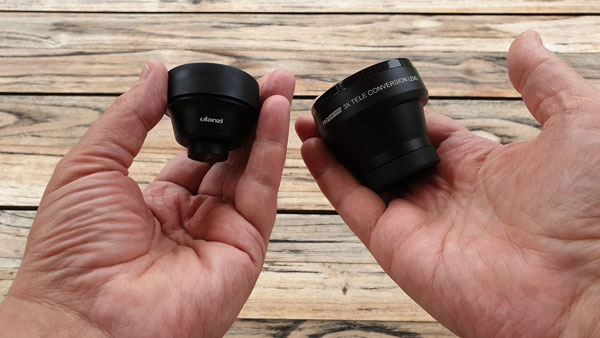Beastgrip 3x Tele & Ulanzi 65mm Compared
Can a $25 tele lens match up to a $200 tele lens? In this article, I’m going to compare the Beastgrip 3x Pro series lens with the Ulanzi 65mm tele conversion lens. I bought the Ulanzi for a lot less than the Beastgrip, so we would expect it to be inferior in quality.
But I’m going to test them out and see what we get.
When might you want to use a telephoto lens?
Filmmakers use long lenses to get a shallow depth of field in their videos. But, when shooting video using your smartphone, if you don’t have one with a telephoto lens, a shallow depth of field can be difficult to achieve.
To achieve a blurry background and for bokeh to appear, you usually have to put a smartphone camera very close to the subject. There’s 2 problems with this.
One is that if the subject is a person, they become very aware of the camera being so close to them. Or maybe you just can’t get that close, for whatever reason. The second problem is that the subject can crop out of the frame when you are so close.
But for many years now, lens makers have provided conversion telephoto lenses – lenses which sit over the top of your smartphone lens. And these can help us achieve something similar to cinematographers using long lenses.
I’ve already made a video comparing these conversion lenses to those used by professional cinematographers. So if you want a good general overview, go check that out.
There’s some downsides to conversion lenses. Lower grade glass tends to add distortion and chromatic aberrations. So what that means is, at the edges of the image, you will see the light diffracted into a spectrum of colour.
Why did I choose these 2 lenses?
Although Moment and others make very good tele lenses around the 58mm and 60mm equivalent, as a filmmaker I feel like I need something a bit stronger. So I got hold of 2 tele lenses: the Beastgrip 3x pro series and the Ulanzi 65mm.
As a filmmaker, I think I most miss the shallow depth of field when I’m shooting close-ups of actors. Having everything in focus suits wide shots, but close ups cry out for blurry backgrounds.
And as I say, achieving that with the standard smartphone lens means getting very close to the actor. Not only can this be off-putting for the actor, but you can also find yourself casting a shadow over the actor’s face.
Using a lens like these means I can stand a bit further back when shooting.
Size and weight
Both lenses are quite big, as long lenses by definition usually are. However, the Beastgrip is about twice the size of the Ulanzi and quite a bit heavier too. Not sure if I would use these lenses with a gimbal, but the Ulanzi is going to be the better choice in terms of weight.
Mounting
When mounting any conversion lens to your smartphone, I find they work best when the conversion lens is as close to the smartphone lens as possible. This means there is less likely to be shadowing and aberrations at the edges of the image.
The Beastgrip lens is designed to be used with their pro series grips. It has a bayonet mount for that, but it also has a 37mm thread. So I’m going to mount it using my Zecti grip.
Beastgrip says the x3 tele is really designed to be used with an iPhone, whereas I will be using my Samsung S9.
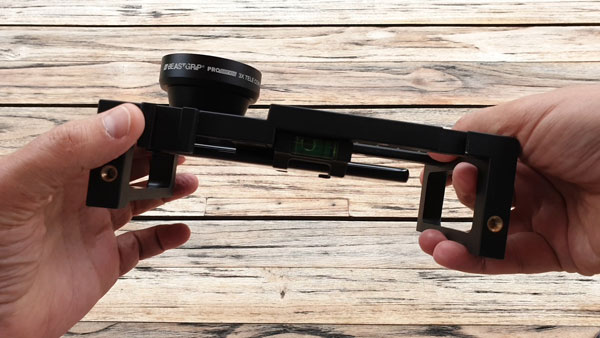
The Beastgrip really needs precise mounting to avoid any shadowing. There is almost no margin for error here. The Ulanzi is a bit more forgiving, but the more central the lens the less aberrations I got.
The Ulanzi comes with 2 mounting clips. One is the traditional clothes peg type hinge clip. The other uses a screw to hold the clip in place.
While the screw version was easier to use, more stable and covered less of the FiLMiC Pro controls, I still had problems with it. There were times when I had to move it a couple of meters to access the exposure controls. And when you have just spent a few minutes getting it into place, having to move it again to set exposure is far from ideal.
But the Ulanzi has a 17mm thread and so does the Zecti cage. So I ended up using both lenses with the Zecti.
Portrait Test
So I tested each lens with me as the subject, using Filmic Pro and Filmic Remote to set my exposure and focus.
I set the camera at the same distance for each shot, so you can see the difference in magnification. The Beastgrip 3x gives the most magnification, the inbuilt is the most wide and the Ulanzi is somewhere between the two.
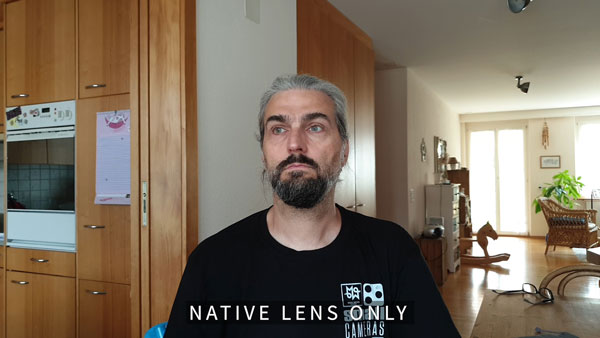
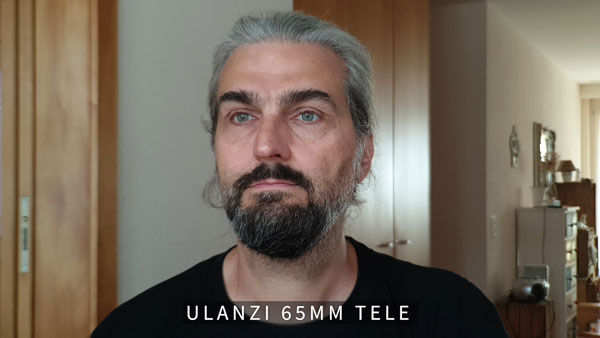
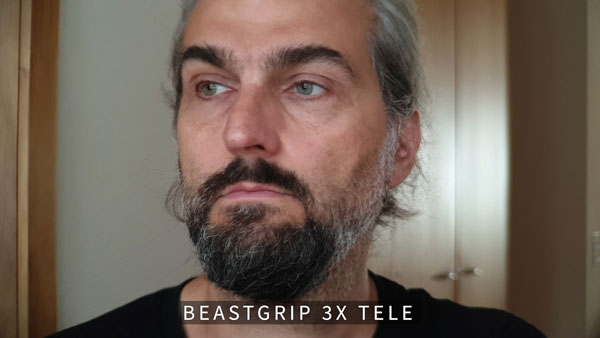
You can see that both lenses make quite a bit of difference in terms of getting closer to the subject. Apart from the difference in magnification, I don’t really see too much difference in lens quality.
When positioned correctly, neither lens creates too much shadowing or too many chromatic aberrations at the edges. At least, when combined with my S9 and mounted using the Zecti. Other devices and mounting systems may cause different results.
Shallow Depth of Field
Both these lenses give you some shallow depth of field. This is great for filming people, if you want a closer shot and some blurry background. And really in terms of quality there seems to be little difference between the lenses.
The Beastgrip adds some extra magnification at the expense of a heavier lens (and greater cost too). This may not be a 100% quality match compared to using the Ulanzi or Beastgrip DoF adapter combined with a proper lens.
In fact, at about $270 the Beastgrip DoF adapter is not a huge amount more than the 3x tele. But it is much bigger and of course you’ll need a lens too (if you don’t already have one).
The big difference is between the Ulanzi 65mm and the Ulanzi DoF adapter, which is around $130. If you consider that the smartphones which now carry inbuilt tele lenses are generally over $1000 and mid range phones can be much less ($400-500) than that. A $25 lens could be the answer if you just wanted to add a little bit of blurry background.
Are they good enough quality?
Personally, I wouldn’t get hung up on examining the edges of the images for flaws in the lens. No conversion lens can compete with a DSLR or mirrorless and a good lens anyway. What I would ask myself as a filmmaker is – do I like the look of what I’m getting?
Remember that professional cinematographers throughout history have deliberately added flaws to the image, in the form of film grain, putting gauze in front of the lens, putting grease on it, placing diffusion filters in front (which is basically glass with tiny specs on it), lens flares and all kinds of stuff.
This is one of the creative sides of cinematography, so I wouldn’t get hung up on everything looking crystal clear. Well, not if you want to get a more soft and smudgy film look.
I have to say, I’m really impressed with the Ulanzi. For $25, the result is pretty impressive. Not sure I could guess which lens was the $200 one, if I didn’t know already.
Would I use these lenses in my films? Absolutely. These are going in my kit bag. The Ulanzi for medium close ups and the Beastgrip for close ups.
Find Ulanzi 65mm on Amazon Find Beastgrip 3x Telephoto on AmazonEager to learn more?
Join our weekly newsletter featuring inspiring stories, no-budget filmmaking tips and comprehensive equipment reviews to help you turn your film projects into reality!
Simon Horrocks
Simon Horrocks is a screenwriter & filmmaker. His debut feature THIRD CONTACT was shot on a consumer camcorder and premiered at the BFI IMAX in 2013. His shot-on-smartphones sci-fi series SILENT EYE featured on Amazon Prime. He now runs a popular Patreon page which offers online courses for beginners, customised tips and more: www.patreon.com/SilentEye



